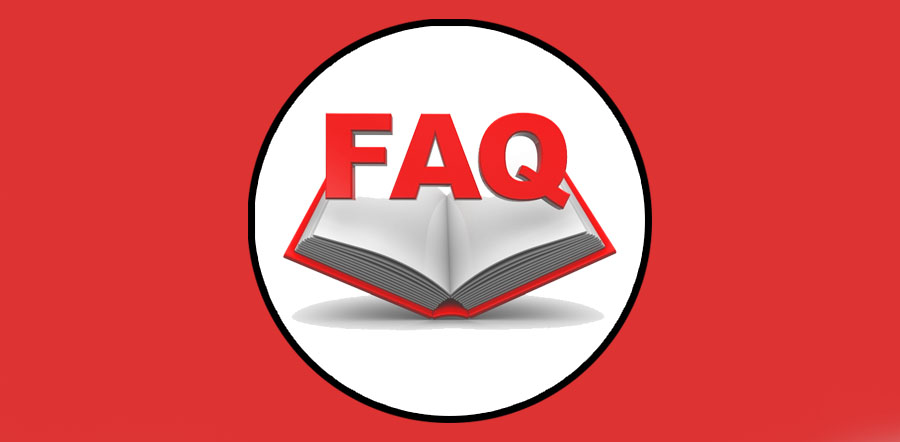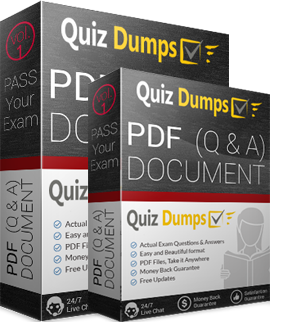CCRA-L2
Guaranteed Success in CCRA-L2 Exam
| CCRA-L2 Exam Dumps PDF + Practice Test | |||
| Exam: | CCRA-L2 | ||
| Exam Name: | AIWMI Certified Credit Research Analyst - Level 2 Exam | ||
| Certification(s): | Certified Credit Research Analyst | ||
| Questions: | 84 Questions Answers | ||
| Last Updated: | Feb 15,2025 | ||
| Price: | Was: $85 Today: $59 | ||
Check Free Demo Before Buy
$ 49.00 – $ 75.00
“The CCRA-L2 practice test is something that You’re looking for a very long time is here !”
Pass your AIWMI CCRA-L2 Exam with the Latest QuizDumps CCRA-L2 PDF Questions and Answers. QuizDumps provides [Authentic , Updated and Real] CCRA-L2 Braindumps that are prepared and verified by IT experts. If you want to get high marks then start your preparation now with QuizDumps Study Material.
1: Download Q&A PDF
You can easily download the CCRA-L2 Questions Answers PDF file for the preparation of Certified Credit Research Analyst - Level 2 Exam and it is especially designed for AIWMI CCRA-L2 exam and QuizDumps prepared a list of questions that would be asked in the real CCRA-L2 exam.
2: Prepare Questions Answers
Use QuizDumps's CCRA-L2 exam dumps PDF and prepare Certified Credit Research Analyst - Level 2 Exam CCRA-L2 Questions Answers with 100% confidently. We offer 100% real, updated and verified exam questions and answers tested and prepared by experts to pass AIWMI CCRA-L2 exam.
3: Pass Your Exam
After your preparation for Certified Credit Research Analyst - Level 2 Exam CCRA-L2 exam by using QuizDumps's exam material kit you will be ready to attempt all the CCRA-L2 questions confidently which will make 100% guaranteed your success in the first attempt with really good grades.
-
LEED-AP-ND
LEED Certifications
Updated: 2024-11-19 100 Questions -
PCCSE
Prisma Certified Cloud Security Engineer
Updated: 2023-02-06 260 Questions -
300-735
CCNP Security
Updated: 2020-11-18 60 Questions -
APM-001
Associate in Project Management
Updated: 2019-12-17 704 Questions -
PGCES-02
PostgreSQL Certified Engineer
Updated: 2017-12-14 142 Questions -
2V0-72.22
VMware Certified Professional
Updated: 2022-03-14 79 Questions -
CPEH-001
GAQM Certified Ethical Hacker
Updated: 2021-11-11 877 Questions -
DEX-450
Platform Developer I
Updated: 2023-02-10 200 Questions
Main points of AIWMI CCRA-L2 Test
The AIWMI CCRA-L2 exam (Certified Credit Risk Analyst Level 2) focuses on extending the foundational knowledge from Level 1 into more advanced credit risk management concepts and techniques. The main points covered typically include:
I. Advanced Credit Risk Measurement and Modeling:
- Credit Scoring and Rating: Delving deeper into statistical models used for credit scoring and rating, including logistic regression, discriminant analysis, and more sophisticated techniques. Focus on model validation, limitations, and biases.
- Credit Risk Metrics: Advanced calculations and interpretations of metrics like Expected Loss (EL), Unexpected Loss (UL), and potential future loss distributions. Understanding the limitations and assumptions of these metrics.
- PD, LGD, and EAD Estimation: In-depth exploration of Probability of Default (PD), Loss Given Default (LGD), and Exposure at Default (EAD) estimations. Advanced techniques and the challenges associated with each.
- Concentration Risk Measurement & Management: This involves understanding how to identify and manage risks arising from concentrations of credit exposures to specific borrowers, industries, or geographical areas. Techniques include stress testing and scenario analysis.
- Model Risk Management: Understanding the importance of robust model validation, oversight, and governance frameworks to mitigate the risks associated with using quantitative models in credit risk management.
II. Advanced Credit Risk Management Techniques:
- Advanced Securitization: A deeper dive into the structure and risks of different types of securitizations, including understanding the different tranches and credit enhancements.
- Regulatory Capital Requirements: A detailed understanding of Basel regulations and other regulatory frameworks relevant to credit risk capital adequacy. This includes specific capital calculations and requirements depending on the type of institution and the risk profile.
- Stress Testing and Scenario Analysis: Advanced techniques for performing stress tests and scenario analysis to assess the resilience of a credit portfolio under adverse economic conditions. This often involves the use of macroeconomic models.
- Credit Portfolio Management: Techniques for managing and optimizing a credit portfolio, including diversification strategies, concentration risk management, and portfolio optimization techniques.
- Recovery Rate Modeling: Focus on estimating and modeling recovery rates in the event of default, influencing LGD calculations.
III. Credit Risk in Specific Industries or Sectors:
The exam may dedicate some portion to the application of credit risk management principles to specific industries (e.g., financial institutions, retail banking, corporate lending).
IV. Practical Application and Case Studies:
The exam will test the ability to apply the concepts learned to real-world scenarios through case studies and problem-solving questions.
It's crucial to review the official AIWMI syllabus for the most up-to-date and precise information on the exam's content. The specific weighting of each topic may vary from year to year.
Comments

